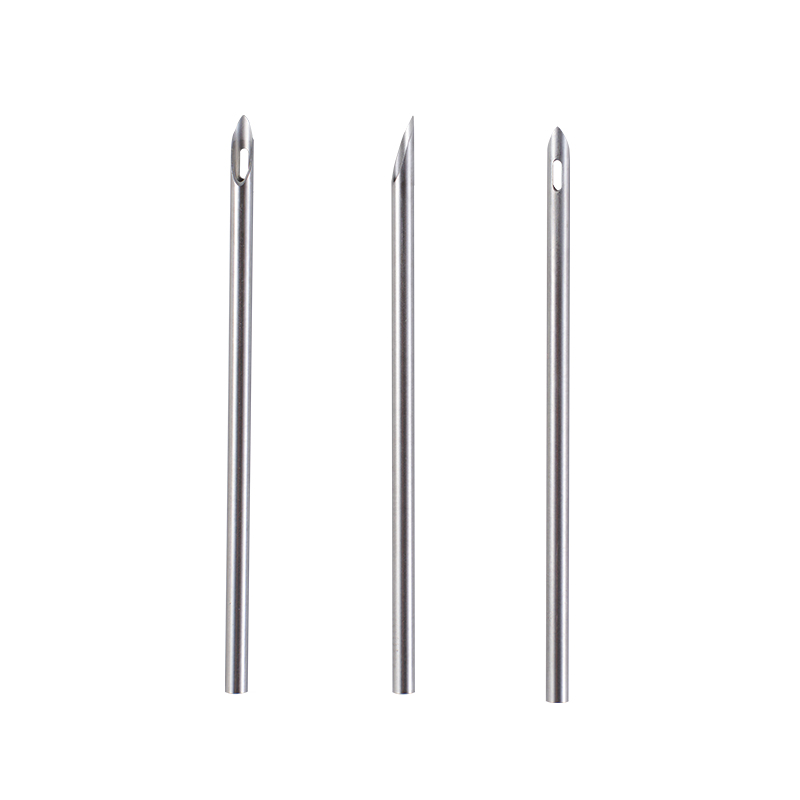+86-0577-86858771
The field of medical needle technologies has witnessed steady and meaningful evolution driven by the growing demands for precision, patient comfort, and application-specific innovation. From general injection use to dental practices and specialized medical procedures, the development of new needle types continues to play a vital role in improving outcomes and reducing risks associated with invasive procedures. The ongoing research and development efforts focus not only on material strength and design but also on less patient discomfort and enhancing accuracy during administration.

One of the commonly used types of medical needles is the long needle for syringes. These are typically utilized when deeper penetration is required, such as intramuscular injections or aspirations. R&D in this area has focused on making long needles for syringe both stronger and thinner. This balance is critical—thin enough to reduce pain but strong enough to avoid bending or breaking during use. Special coatings are also explored to reduce friction, which helps the needle glide more smoothly through the skin and tissue. In some cases, manufacturers are experimenting with polymers and alloys that improve durability while maintaining flexibility. The challenge lies in adjusting gauge sizes without compromising the mechanical performance of the needle.
When it comes to needles used for injections more broadly, the range of developments is quite extensive. These needles are not a one-size-fits-all solution. Instead, their sizes, bevel designs, and sharpness are often tailored to specific applications—be it subcutaneous, intradermal, or intravenous injections. One area that has seen particular focus is the bevel design. Different bevel angles can change how easily a needle enters the skin and how much tissue damage it causes. Researchers are constantly evaluating bevel geometry to ensure better puncture performance and less pain.
In addition, syringe needles are now being tested with advanced micromachining techniques. These methods allow for very precise control over needle shape and surface texture. A smoother surface can make a surprising difference in both the experience of the patient and the ease of use for the practitioner. There is also a growing interest in integrating sensors or microfluidic elements into needle assemblies, especially in the context of smart drug delivery systems.
The dental syringe needle is a specialized form of medical needle that serves a unique function in oral care. These needles are generally shorter and finer, designed to deliver anesthesia with high accuracy and small discomfort in sensitive areas of the mouth. Research into dental needle technology has focused on vibration reduction and less pressure feedback. This is important because even small movements or inconsistencies during injection in dental procedures can cause patient distress or reduce the effectiveness of the anesthesia.
A major area of innovation for dental syringe needles is the use of ultra-fine gauge sizes, which allow for more comfortable injections without sacrificing control. Dentists often rely on precision rather than volume, so the design of these needles must support exact dosing. Coatings that have less tissue resistance are also in active development, making the insertion process smoother and more predictable.
Safety is another ongoing concern in all categories of needle use. Retractable needles and other safety mechanisms are now being more widely implemented across syringe types to prevent accidental needle sticks and ensure proper disposal. While these designs were once more common in hospital environments, they are gradually becoming standard in outpatient settings and clinics as well.
In conclusion, research and development in medical needle technologies continue to refine how medical professionals administer injections, perform procedures, and manage patient care. Whether focusing on long needles for deeper applications, general-use injection needles, or highly specialized dental syringe needles, every advancement is aimed at improving safety, precision, and patient experience. These developments may appear subtle to the end user, but behind each needle lies extensive testing, engineering, and design consideration. As materials and manufacturing methods evolve, medical needles will likely become even more adaptable, efficient, and comfortable for users on both ends.
Wenzhou Kangyu Medical TREATMENT
+86-0577-86858771
+86-13957709138
No. 626 Airport Avenue, Longwan District, Wenzhou City, Zhejiang Province, China
Contact Us